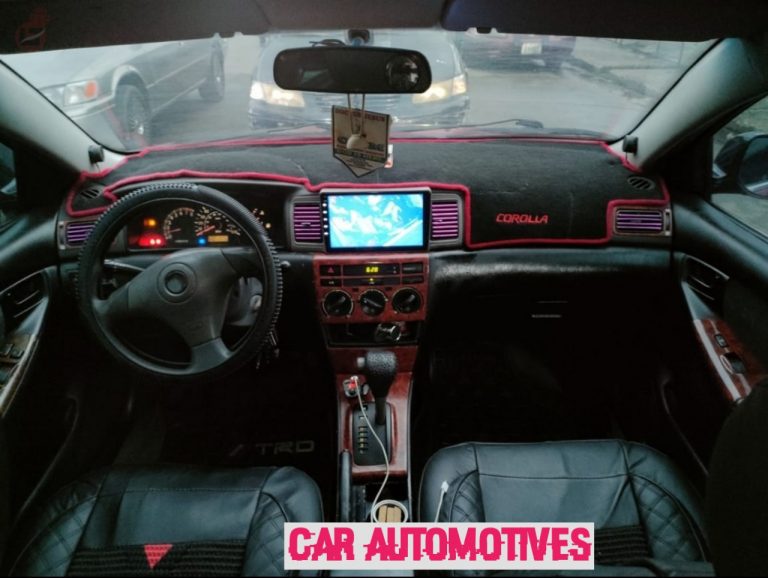Car owners should have encountered scenarios where the side of their tires starts to swell or bend outward. These noticeable protrusions are called sidewall bubbles.
Sidewall bubbles often appear after collision with a surface while driving, and it’s not advisable to continue driving once bubbles are present in your tires as it can cause tire outbursts at any time.
As a norm, tires are built to be spherical and have a smooth surface for easy vehicle navigation. However, a sidewall bubble indicates that the inner tire fabric is weak and cannot prevent the tire from exploding due to pressure from road surfaces.
What Causes Tire Sidewall Bubbles?
Tire Sidewall bubbles can be caused by one or a combination of any of the incidents below.
- Sidewall bubbles can appear on your vehicle’s tire if you mistakenly hit a bump, rubble, or a pothole while driving at a very high speed.
- Tire bubbles also occur due to defects in the tire production process.
- Overinflation of tires will exert excess pressure on the inner linens of the tires, thereby causing a bubble on any little Collision.
- Under-inflated tires also produce sidewall bubbles due to internal stress exerted on the tires by the road surfaces.
- Sidewall bubbles often occur when pressure from collisions affects the tire linen and causes air leakage into the tire body.
Is a Tire Bulge Dangerous to Drive ON?
It’s advisable to fix a tire bulge once it’s noticed on any vehicle’s tires. Sidewall bubbles not only endanger your life but also serve as a threat to other roadside users.
A tire Sidewall bubble is vulnerable because it can burst at any time, causing severe injuries to pedestrians, cyclists, and other road users.
Should Sidewall bubbles be fixed instantly?
Sidewall bubbles should be fixed instantly as they reduce the steerability of a vehicle, cause loss of control, overheating, and wheel runouts, and also decrease friction between the road surface and the tire.
Tire Sidewall bubbles also cause damage to bearings and suspension systems.
How to fix a Tire Sidewall bubble
Tire bubbles might not be noticed at first, but as time goes on, they’ll become visible and more prominent as we encounter bumps and potholes while driving.
Some bubbles can often be fixed by inserting an internal reinforcement patch. However, this fix isn’t permanent as they’ll wear off within days, but it’ll buy you more time.
Another fix for tire sidewall bubbles is sowing the affected area with Capron threads and later vulcanizing the sewn area to improve the structure of the surface.
In addition, some of these internal tears can’t be fixed if they are severe. However, it’s advisable to permanently change a tire with sidewall bubbles to enable you to enjoy a warranty and the best road experience.
Patched tires will reduce the tire’s performance and can burst at any time, so it’s best to get rid of them quickly.
How to Prevent Tire Sidewall Bubbles
It’s pretty impossible to avoid bumps and potholes while using the road, especially the ones we don’t notice in time and run into coincidentally.
You can apply one or more of the below prevention techniques to prevent your tire Sidewall bubbles from affecting you.
- Drive at low speeds
- Avoid low-profile tires
- Shun risky maneuvers
- Do not over-inflate or under-inflate car tires
- Shun sudden braking
- Avoid potholes and contours
- Slow down when climbing road bumps
- Have Spare Tire(s) and tire gauge in your vehicle
- Tire maintenance
Can you Repair Bubbles on a Tire?
While we’ve provided you with possible ways to fix tire Sidewall bubbles, it’s advisable to initiate a complete tire replacement, especially for those who run on bumpy roads or roads full of contours.
Driving with a spare wheel intact is also advisable to implement a tire replacement if you run into tire bubbles. Also, if you’re helpless, you can find any automotive engineer closest to you and request a tire replacement.
Tire Sidewall Bubbles FAQs
How long can I drive with a small bubble in my tire?
There’s no specific time to use a tire diagnosed with sidewall bubbles, as it can take days to advance from tiny to large.
However, driving slower is advisable, avoiding careless overtaking, applying brakes instantly, and seeking a tire replacement service as soon as possible.
You can also remove any pressure from the vehicle to increase the lifespan of the tire till a new one is put in place.
Should a Tire with a Bubble Be Replaced or Repaired
Yes, with no hesitation. Driving a car with sidewall bubbles on the tires endangers your life and other road users as it can blow up unannounced.
Also, ignoring tiny bubbles on the tires will eventually increase into a giant bubble and burst out due to excess air in the tires.
As an Amazon Service LLC Program Associate, V. Auto Basics earns from qualifying purchases. See Our Affiliate disclaimer.
